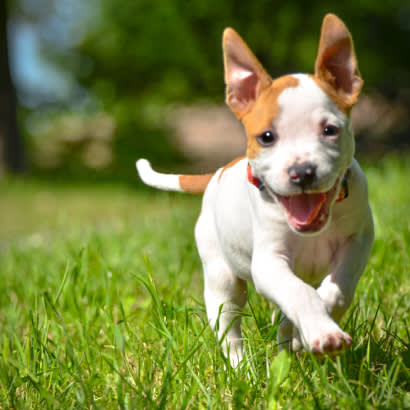
Perhaps the biggest misconception about dog parks is that they’re just for dogs. While it’s undoubtedly true that dog parks offer ample opportunities for dogs to exercise and socialize off-leash, dog parks also provide many benefits for dogs’ human companions.
These benefits are extensive and include everything from promoting walkable, amenity-filled neighborhoods to building a sense of community. In fact, according to an NRPA survey, nearly half of dog park visitors indicated becoming acquainted with other people in the neighborhood through their pets. Just as dogs need structured ways to facilitate social interactions, so do humans!
It’s little wonder that dog parks are currently one of the most popular features in public parks. But simply installing a dog park won’t maximize the associated benefits. For best results, you need to take additional steps before, during and after opening the park.
Below, we’ve cataloged seven of the most important ways you can make the most of your dog park and put it in a position to support dogs, humans and the community at large.
1. Gain community support
Simply put, a dog park won’t be successful without the surrounding community's support. Not only can lack of support hold up the planning and construction process, but it also means community members won’t use the park once it’s complete.
Ask for feedback on your park plans before and after installing and opening a dog park. Holding community meetings can help you address concerns, determine where to put the park, the park’s design, events and programs to host, partnerships to develop and policies to include. For example, in Raleigh, discussions with community members helped planners decide against a proposal to require memberships for future dog park access.
Ultimately, a dog park should be built for your community. When you take in and act on community member feedback, you make it more likely that they’ll go to and use the dog park.
2. Develop partnerships with local businesses and nonprofits
Partnerships with local businesses and nonprofits are just as meaningful, if not more so, as those with individual community members. A solid partnership can offer your park both financial support and publicity.
Connect with well-loved dog daycares, groomers, animal hospitals, rescues and other animal-related organizations. For example, if you partnered with a boarding facility, it could help spread the word about a dog park opening by sending emails to customers stored on its boarding software. In exchange, you might post a sign highlighting them as a park sponsor.
Remember that partnerships are two-way streets. Your partners help you, so make sure also to offer support to them in return. Consider placing signs or banners with your partners’ logos around your new dog park to help promote their services.
3. Choose the right location for your dog park
To make the most of your dog park, you want it to be easily accessible to as many people as possible. If it’s located miles away from any homes or businesses, it may fall into disuse. We recommend choosing a location for your dog park that is:
- Situated in a high-density urban area.
- In walking distance of homes and businesses.
- Free of environmental constraints such as wetlands or floodplains.
- Underutilized, with access to potable water and parking.
Of course, not every dog park location will be able to meet all of these characteristics. Ultimately, you should always consult your community and relevant partners before making a final decision.
4. Include a bevy of amenities for dogs and humans
In addition to your park’s location, it should also include amenities that promote a fun experience for both dogs and humans. At the bare minimum, your dog park should have:
- Double-gate entry system
- Water spigot for thirsty dogs
- Waste stations and bags
- Sturdy fence
However, for an improved experience, we also recommend including human-focused amenities, such as clean restrooms, water fountains for thirsty people, places to sit (ideally in the shade), and lighting for extended, after-dark hours.
5. Post clear, easy-to-follow rules
People (and their dogs) often break rules simply because they don’t know what the rules are. Signs (as long as they’re made well) can change that! Your signs should include park rules, hours of operation and contact information in an easy-to-read font.
6. Keep your dog park clean
No one wants to visit a dirty dog park. But only six out of 10 dog owners pick up after their pets. With statistics like that, your dog park can quickly become an unpleasant mess.
In addition to posting signs with rules and regulations, install easily accessible waste stations and leverage engaged community members as volunteers to keep bag dispensers stocked, spread mulch and enforce rules.
7. Host additional events and special programs
Once your dog park is open and flourishing, how do you keep attendance high? One way to garner continued support and interest in your dog park from owners and dogs alike is by offering additional events and special programs.
The opportunities are endless! Leverage new and existing partnerships to work with a nonprofit to host a dog adoption event or with a mobile groomer to offer dog grooming and cleaning on-site. You could even recruit a food truck to sell food and drinks to generate revenue to support park maintenance.
To reach as many people as possible, post flyers for your events around the park, add a calendar to your park website, and share updated information on your park’s social media platforms.
Of course, just as every dog is different, so is every dog park. What events and experiences would you like to see hosted at your dog park?
Casey Dorman is the sales manager at Gingr software.


